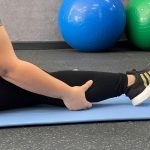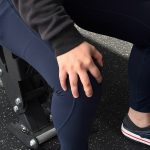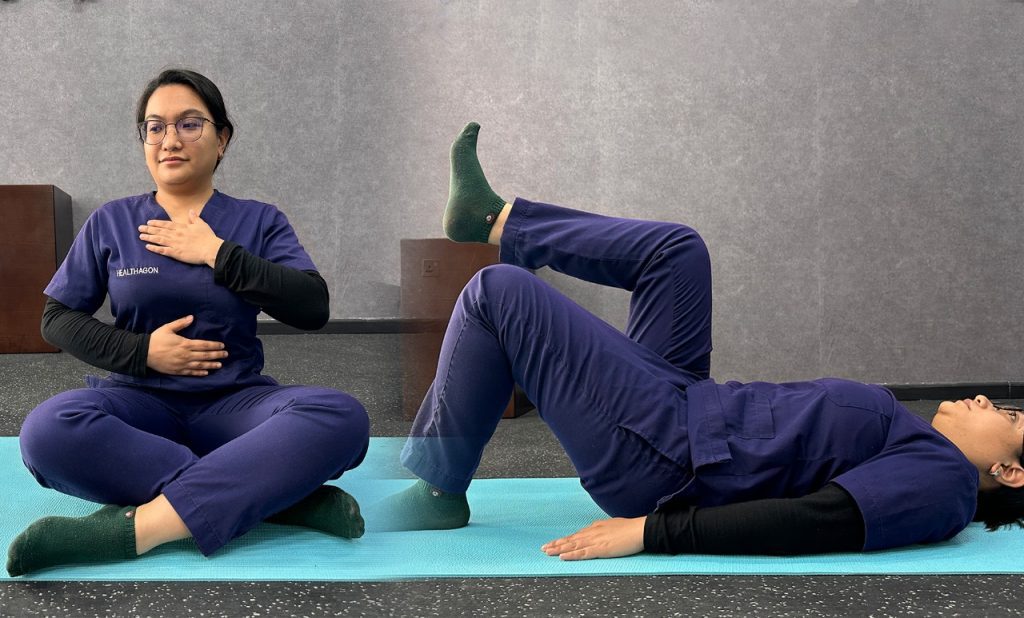
Health Blog | 3 MIN READ
Pelvic Floor Conditions
Dr. Mau
Both men and women have a pelvic floor
There are two types: a complete tear and a partial tear.
● Woman: The muscles, ligaments, connective tissue and nerves that provide support to the vagina, uterus, rectum and bladder that as a whole allow the pelvic organs to function. ● Men: What supports the bladder, rectum and pelvic organs for men is their muscles, tissues and nerves.
Pelvic floor conditions often occur in those with a weakened pelvic floor or those with tears in the connective tissue
The Anatomy of the Pelvic Muscle
The pelvic floor muscles are found between the coccyx (tailbone) and the pubic bone and pelvis. Their job is to support the bowel and bladder (as well as the vagina for females)
When these muscles contract, the internal organs are lifted and tightened in the vaginal and anal area. This can cause difficulty in urine passage and sexual function.
● Bladder
The pouch holding your urine.
● Uterus and vagina
Organs for women.
● Prostate
Organs for men.
● Rectum
Located at the end of your intestine where your body stores solid waste
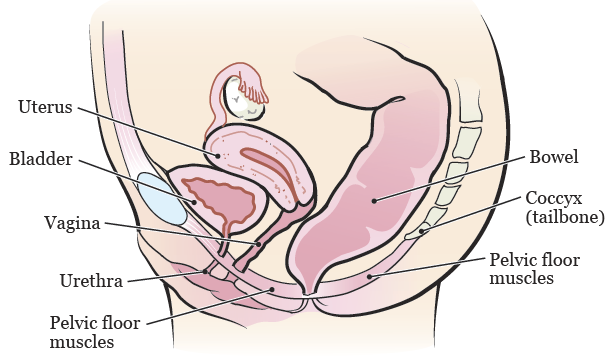
Pelvic floor muscles (female).
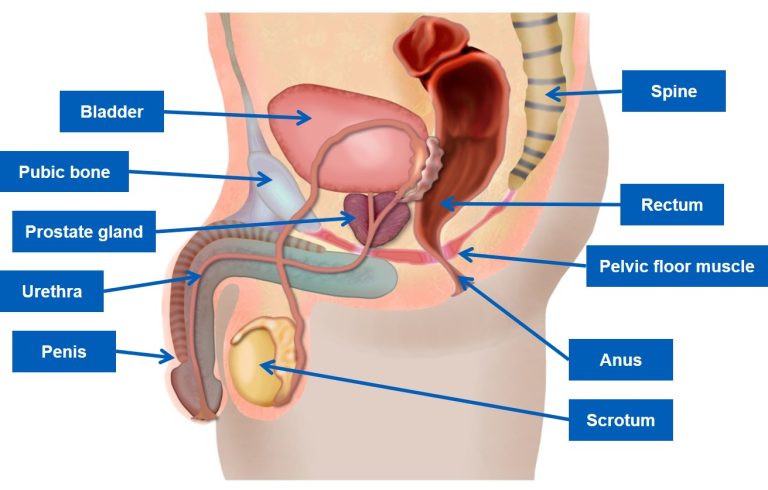
Pelvic floor muscles (male).
Pelvic Dysfunction Causes
■ Difficulties In Bowel Movement Or Starting
■ Incomplete Bowel Movement
■ Leaking Urine Or Stool (Sometimes When Laughing, Sneezing Or Exercising)
■ Frequent Urge To Urinate
■ Pain With Urination
■ Constipation
Causes Of Other Pelvic Conditions
■ Traumatic Injuries
■ Pregnancy
■ Overusing Pelvic Muscles
■ Pelvic Surgery
■ Being Overweight
■ Age
Lifestyle Changes For Pelvic Floor Conditions
● Diet : Limit foods and drinks that may stimulate your bladder such as caffeine, carbonated beverages, artificial sweeteners, citrus fruits and drinks and alcoholic beverages all may stimulate your bladder.Fiber assists your body in digesting food by allowing the stool to be the optimum consistency, which can also prevent constipation. Fiber is found in fruits, vegetables, beans, lentils and whole grains
● Weight changes : For women who are overweight, losing weight may help in their bladder control and pelvic organ symptoms may relax by relieving pressure on the pelvic organs.
Pelvic Floor Exercises To Strengthen and Stretch
1. Quick Flick Kegels
Purpose:
● Activate Muscles After
● Strength to Avoid leaks upon coughing or sneezing
Gently lie on your back with your knees bent and feet flat on the
floor. Exhale and bring your navel to spine, quickly contract releasing your pelvic floor muscles. Try to contract a for a second before releasing
Repetition:
10 times for 10 seconds (2x-3x)
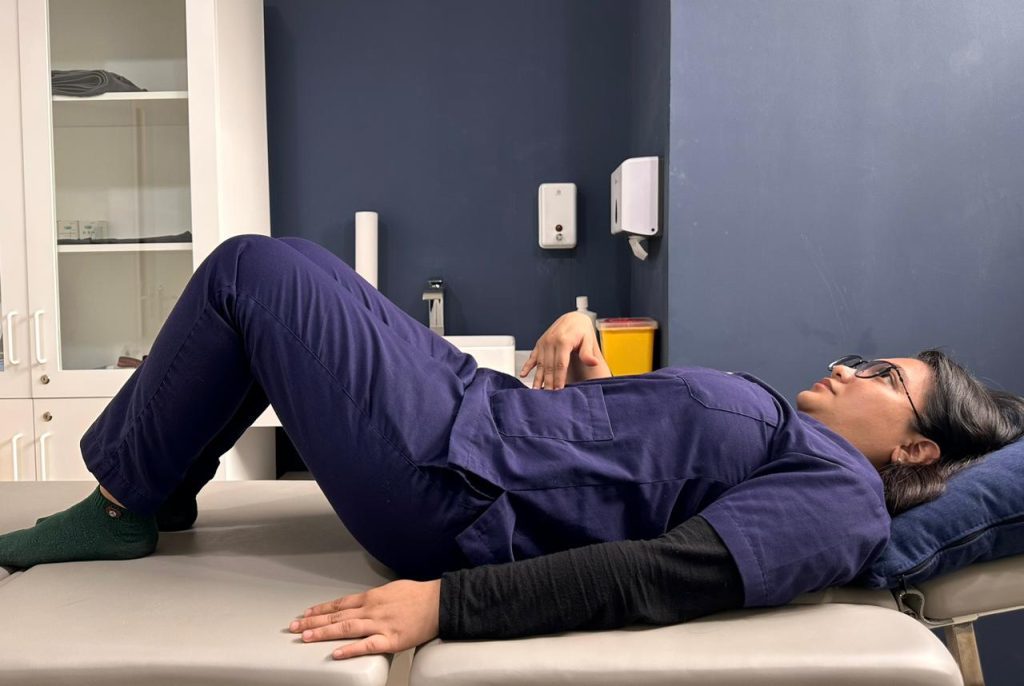
2. Heel Slides
Purpose:
● Encourage pelvic floor contracts
● Targets deep abdominal muscles
Begin by lying flat on the floor with your knees bent and your pelvis
in a neutral position. Deeply inhale and exhale through the mouth
allowing your ribs to naturally compress. Slide your right heel away
from you, inhale and bring your leg back to its initial position
Repetition:
10 slides on each side.
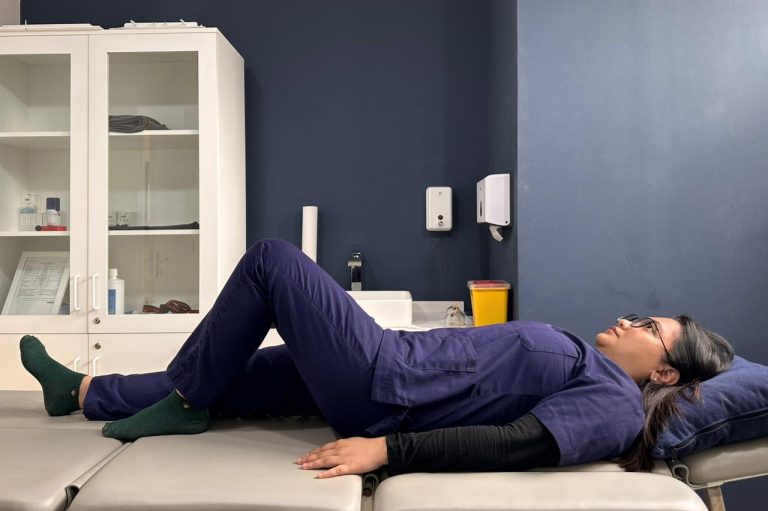
3. Toe Taps
Purpose:
● Increase core stability
● Promotes pelvic floor contractions
Lie on the floor with your knees bent and your pelvis in a neutral
position. Allow your ribs to naturally compress by inhaling and
exhaling via the mouth. While your knee is bent, slowly lift it away from the floor and then gently
lower.
Repetition:
Repeat the exercise alternating legs. (You should feel no pain in the lower back). Allow your
core muscles to stay engaged through the entire exercise.
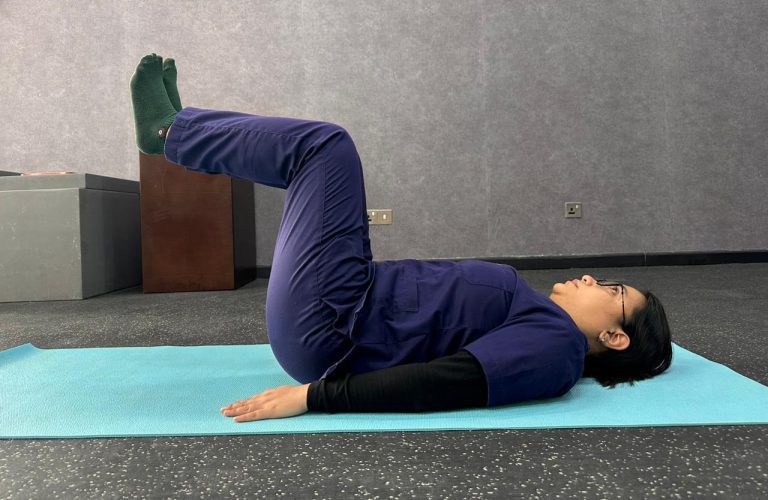
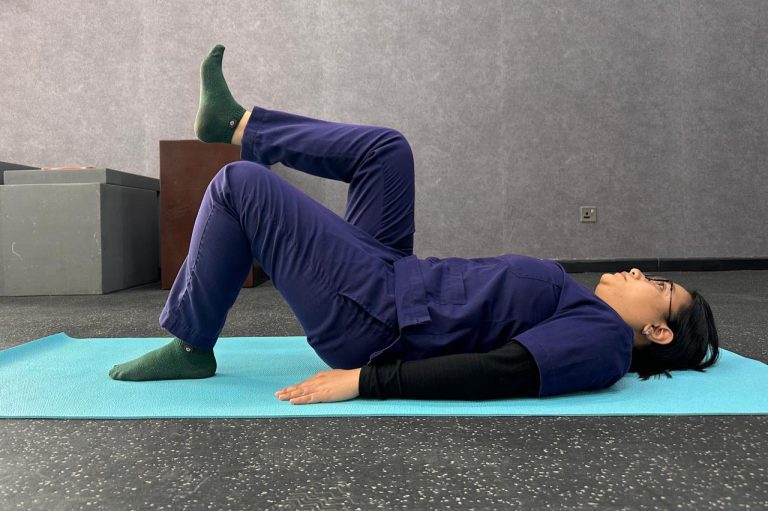
4. Happy Baby Pose
Purpose:
● Stretching and releasing pelvic floor
Begin by lying on the floor with your knees bent, slowly bring
your knees towards the sides until it is slightly wider than your
torso. Hold the outside or inside of your feet. Push your feet into
your hands, hold for as long as you can and gently rock from side
to side
Repetition:
10 times for 10 seconds (2x-3x)
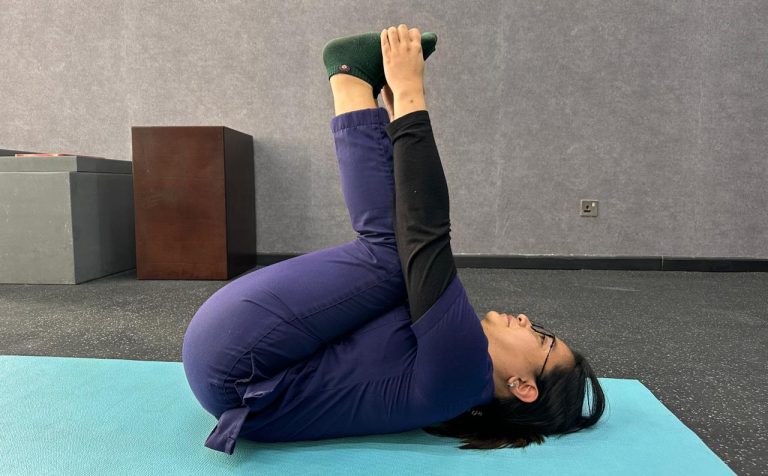
5. Diaphragmatic breathing
Purpose:
●Encourages the functional relationship between the diaphragm
and the pelvic floor.
● Excellent for reducing stress.
For this exercise you can lie on the floor or remain seated. Once you’ve
relaxed, place one hand on the stomach and the other on your chest.
Inhale through the nose for 2-3 seconds to expand the stomach and slowly exhale.
Repetition:
Repeat several times while keeping one hand on the chest and
one on the stomach.
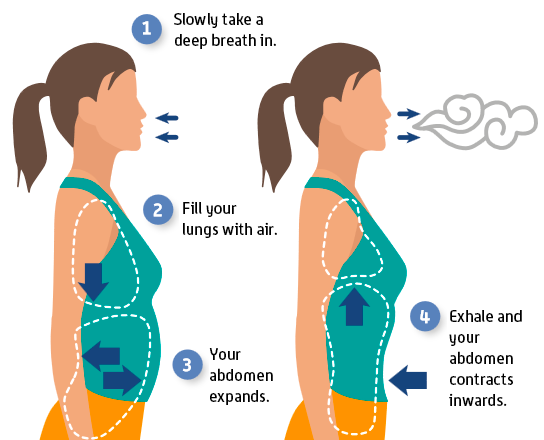
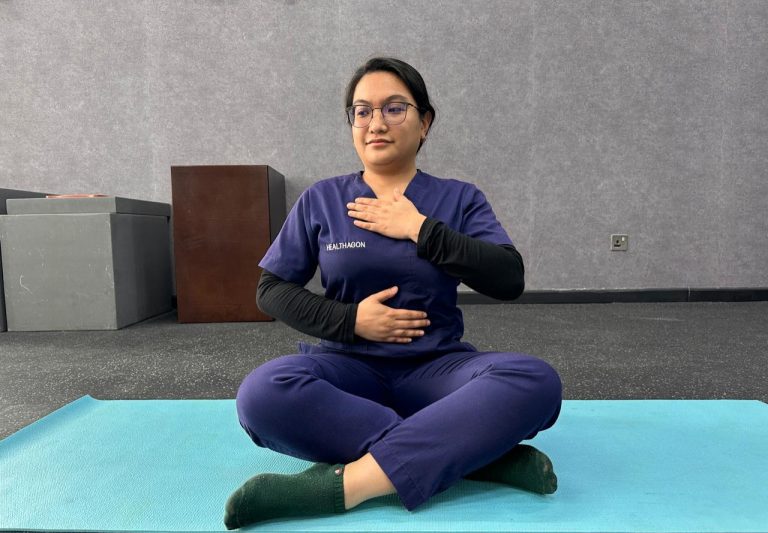
People Also Ask :
No, they are not normal with aging, they are however more common in older women.
Yes, vaginal childbirths can actually double the rate of PFD compared to cesarean delivery or
women who have not given birth.
Even better if you can take precautions and avoid it.
● Leaking urine
● Problems with bowel movement
● Pressure in the pelvis
● Pain when urinating
● Difficulty emptying the bladder completely




